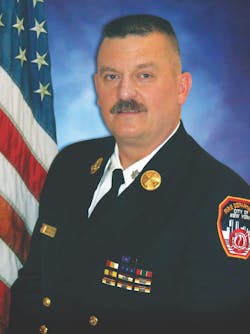The Fire Scene: Calling For Help: A Good Policy for Fireground Commanders
Key Takeaways
- When a fire department’s policy is to call for mutual aid after the need becomes apparent, one must remember that a built-in delay is in play.
- The ISO rating of a fire department that established automatic aid is often higher than it would be without such an agreement.
- A dangerous and unsafe situation can exist for fire departments that don’t call for assistance or don’t provide it to their neighbors.
Fire departments across the country request assistance from other agencies every day in every state, but many departments don’t. There are numerous valid reasons for calling for help for many different types of situations, and there are very few valid reasons for not calling for help.
Mutual aid
One of the most positive results of requesting assistance from other agencies is personnel. If you’re the first-to-arrive engine at a fire in a residential building with just three or four personnel on board and no other units have yet to respond, one of your first thoughts should be to call for more help. This request could be for more companies from your department to be assigned or for a mutual-aid response from a neighboring department.
A key point: The time element is important, too. If your policy is to call for mutual aid after the need becomes apparent, you have a built-in delay for that assistance. First, a fire company that’s several miles away from the reported incident won’t be assigned to respond until the first-due unit arrives, sizes up and requests assistance Second, you can’t assume that company is available in its quarters.
Automatic aid
Another method of requesting assistance from other local agencies is to establish automatic aid rather than mutual aid. The dramatic difference between the two processes are time and your ISO rating. When a department recognizes that reliable assistance is required on a regular basis, it can consult with and request automatic first-alarm assistance (auto aid) from any number of its neighboring departments.
“Automatic” is the key term here. It means that the auto-aid department will be dispatched at the same time as the first-due department. This immediate and simultaneous response by two or more fire companies results in two benefits. First, there’s at least one additional company along with its staffing on the way to the incident at the same time that the first-due units are. If the alarm turns out to be a working incident, the auto-aid company will arrive minutes sooner than it would if it was called when the first-due company arrived. Second, the ISO rating of the agency that requests assistance will be calculated with the department’s details and specifics as well as with the addition of the auto-aid company’s apparatus, staffing and response times, which often results in the original department achieving a higher and more desirable rating.
‘Reasons’
A dangerous and unsafe situation can be found in many communities in which companies or departments don’t call for assistance or don’t provide it to their neighbors. This is a troubling situation that has absolutely no benefit to any of the departments and, more importantly, no benefit to the citizens. This isn’t a volunteer-vs.-paid department issue nor a small-vs.-large urban department issue. However, the “reasons” often are asserted where this refusal to assist exists.
Another reason for this kind of situation is that two departments had an “incident” 20 years ago and haven’t provided mutual aid since then. The situation often is continued by chiefs, officers and members who weren’t even on the department when the initial event occurred.
These refusal-to-assist situations have a serious negative effect on any department that’s involved and cause serious negative results for citizens, who are forced to wait for an engine company to travel, say, 10 miles to assist them when the neighboring department has a staffed firehouse perhaps just two miles away that isn’t called to assist.
An obligation
If you are a fire chief in a department that has these refusal-to-assist issues, you’re obligated to remedy the situation. Contact your neighboring departments and bury the hatchet. Get your troops together for drills and even some social events and lead your department and your community into a safer and more effective future.
About the Author
John J. Salka Jr.
Battalion Chief
JOHN J. SALKA JR., who is a Firehouse contributing editor, retired as a battalion chief with FDNY, serving as commander of the 18th battalion in the Bronx. Salka has instructed at several FDNY training programs, including the department’s Probationary Firefighters School, Captains Management Program and Battalion Chiefs Command Course. He conducts training programs at national and local conferences and has been recognized for his firefighter survival course, “Get Out Alive.” Salka co-authored the FDNY Engine Company Operations manual and wrote the book "First In, Last Out–Leadership Lessons From the New York Fire Department." He also operates Fire Command Training, which is a New York-based fire service training and consulting firm.

